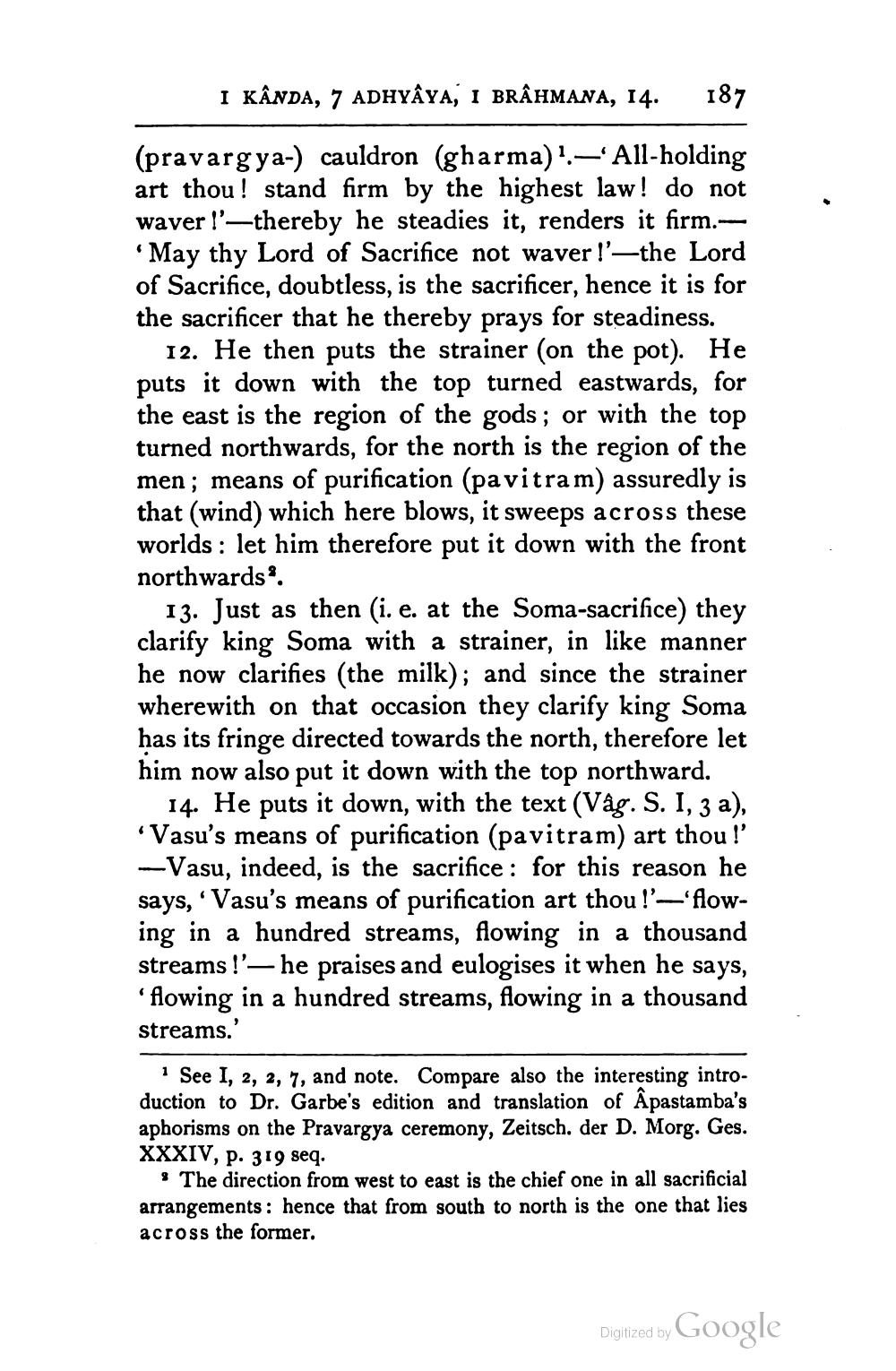________________
I KÂNDA, 7 ADHYÂYA, 1 BRÂHMANA, 14.
187
(pravarg ya-) cauldron (gharma)? — All-holding art thou! stand firm by the highest law! do not waver l'—thereby he steadies it, renders it firm.--
May thy Lord of Sacrifice not waver!'—the Lord of Sacrifice, doubtless, is the sacrificer, hence it is for the sacrificer that he thereby prays for steadiness.
12. He then puts the strainer (on the pot). He puts it down with the top turned eastwards, for the east is the region of the gods; or with the top turned northwards, for the north is the region of the men; means of purification (pavitram) assuredly is that (wind) which here blows, it sweeps across these worlds : let him therefore put it down with the front northwards.
13. Just as then (i. e. at the Soma-sacrifice) they clarify king Soma with a strainer, in like manner he now clarifies (the milk); and since the strainer wherewith on that occasion they clarify king Soma has its fringe directed towards the north, therefore let him now also put it down with the top northward.
14. He puts it down, with the text (Vág. S. I, 3 a), *Vasu's means of purification (pavitram) art thou!' -Vasu, indeed, is the sacrifice : for this reason he says, 'Vasu's means of purification art thou !'-'flowing in a hundred streams, flowing in a thousand streams!'— he praises and eulogises it when he says, 'flowing in a hundred streams, flowing in a thousand streams.'
See I, 2, 2, 7, and note. Compare also the interesting introduction to Dr. Garbe's edition and translation of Âpastamba's aphorisms on the Pravargya ceremony, Zeitsch. der D. Morg. Ges. XXXIV, p. 319 seq.
The direction from west to east is the chief one in all sacrificial arrangements : hence that from south to north is the one that lies across the former.
Digitized by Google




